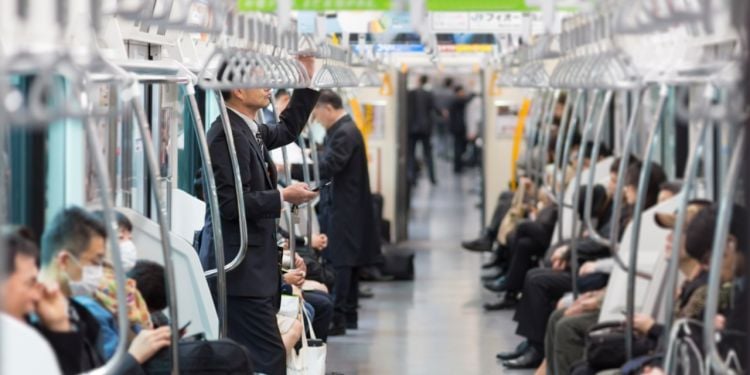Getting around Tokyo

Japan's capital city has a well-developed, modern, convenient and accessible transportation system. It is possible to live without a car there, even if you move away to cities like Musashino or Fussa. Here's a review of the main means of transportation in Tokyo. It will cover everything from trains to subways, buses, bicycles and, of course, cars.
Tokyo by car
In Tokyo, parking lots are often expensive. Avoid parking your car on the street. Fines come down very fast.
Parking lots in Tokyo
In most cases, you will come across "parking by unit", or "self-service". These are very small parking lots with 1 to 3 spaces. You simply pay according to the time your vehicle occupies the lot. Once parked, your car is immobilized through a ground device. As long as you have not paid, the car will remain blocked.
Underground parking lots and parking towers are obviously much larger. You will find them around large shopping malls and downtown. Parking towers look like buildings, with each floor being a parking lot. The system is fully automated and "stacks" cars on top of each other. Employees are there to assist you if you need help.
Carpooling in Tokyo
In Japanese, carpooling is called "ainori". To drive in Tokyo while saving money, consider carpooling. Notteco and NearMe are the leaders in this market segment.
Bikes in Tokyo
Japanese people use bicycles a lot. They are an economical and practical means of transportation and an integral part of the Tokyo landscape. When you register at the city hall, you will be given a practical guide on how to ride a bike in Tokyo. To find out about bicycle parking facilities in your area, check with the city hall. They will provide you with a list of parking facilities, translated into English.
Bike parking is called "churinjo" in Japanese. You can find them near train stations, near stores, near houses. There are also underground parking lots. These parking lots are often not free.
Registering your bike in Tokyo
Whether it is new or used, you must register your bike. If you don't, you risk a fine. Go to a bike store and ask if they offer registration (some shops do).
Trains and subway in Tokyo
With over 200 companies, rail transport is the preferred mode of transport in Japan. The first train line started in 1872. and since then, the network has continued to grow. Tokyo has a state-of-the-art transportation network. It is impressively punctual and serves all areas of the capital. Trains (densha) and subways (chikatetsu) are well-maintained, clean, comfortable, and quiet.
Good to know:
- The stations have Wi-fi.
- Respect the direction of travel.
- Station names are also written in the Latin alphabet, and instructions are translated into English. Each subway and train line has its own color. During transportation, instructions are given in Japanese, then in English.
- You pay according to the company you use and the distance you travel. The further you go, the more different companies you use, and, therefore, the higher the price of the trip.
- Suica, or Pasmo transport cards are valid throughout the country.
Finding your way around the stations and subways
A station is called "eki". For example, "Shinjuku eki" stands for "Shinjuku station". A subway line is called "sen". For example, "Marunouchi sen" stands for "Marunouchi line".
Subway and railway companies
There are two major subway companies operating in Tokyo, namely Tokyo Metro and Toei Subways. As far as trains are concerned, there are Japan Railways (JR), Tobu, Seibu, Odakyu, Keio or Keisei. The famous Shinkansen and Yamanote belong to Japan Railways. and More precisely, the Yamanote belongs to JR East. JR East also manages the Sobu (JR Sobu), Chuo (JR Chuo) lines. The Tobu line connects, among other destinations, Saitama and Tokyo.
Good practices when commuting in Tokyo
At the train station, the subway station, or at the bus stop
Line up respectfully. When waiting at a bus stop, for example, queue up parallel to the street to let passers-by move freely. Let the passengers get out before getting in.
On the train or subway
Avoid eating. Don't talk on the phone, and don't take the priority seats (reserved for pregnant women, the elderly, the sick, etc.). If no one is using them, you can sit down. But free the seat as soon as you see a priority passenger.
Buses in Tokyo
There are three types of buses in Tokyo:
- Single fare buses
- Community buses that go around a district (e.g., Shibuya and the Hachiko bus)
- Variable fare buses.
In Tokyo, there are a lot of single-fare buses.
Commuting in Tokyo is expensive
Quality comes with a cost. In Japan, transportation is expensive. If you are working in Tokyo, your company can pay for all or part of your commuting costs. This measure also works for small or odd jobs (baito). Schoolchildren and students also benefit from reduced fares. Invest in a good bicycle or pair of walking shoes to save money. It's a good way to do your daily sport and discover Tokyo in a different way.
Useful links:
Notteco - carpooling site









